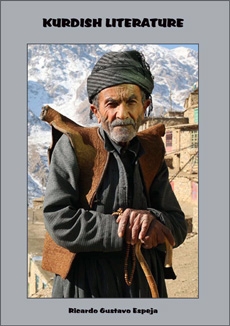| “Una lengua es una tradición, un modo de sentir la realidad, no un arbitrario repertorio de símbolos”
Jorge Luís Borges
“A language isn’t an arbitrary repertoire of symbols, is a tradition, a manner of perceive reality “
Jorge Luis Borges
1. - ORAL AND WRITTEN TRADITION
1.1 A place into the world
Kurdish tongue have had a very long history where is mixed both oral literature until nowadays, mainly between Yezidi Community (the aboriginal Kurdish religion) by means of qawals (religious hymns) compiled by P. Kreyenbroek (1995) or in Children literature, (S. Nakshbandi 1999) also as a source of history of this People (Christine Allison, N. Fuccaro, Sevê Evîn Çîçek et. Al). So in the West were Layard (1848) and Roger Lescot the beginners is strength oral history of Kurdish Nation.
One of most important oral Kurdish literary (and essential document about Kurdish identity also is celebrated by Persian people but with a different signification, so it's wrote in Shanameh – The Book of Kings- wrote in XI A.C.E by Persian poet Fîrdowsi) is the epic victory of blacksmith Kawe-î Asinger against king Assyrian Zuhak, tyrant colonialist of the ancient kingdom of Media.
that killed young people because he need the youth brain mixed with one of sheep in order to healed their wounds in his shoulders, so he killed thousands of Media youthful. But one of them may escape to Zagrous Mountains named Kurd, many followed him , thus they were called Kurds . One day two Kawe-î Asinger sons were elected for sacrifice, the blacksmith (in this context has an importance because as “master in metallurgy” was a kind of hierophant, he was a nexus between the metals – the deepest of earth – and sky powers. M. Eliade 1993) refused that their sons were killed and contacted with the people leaded by Kurd, and, determined not summoned more to Zuhak criminal yoke. So, Kawe-î Asinger with his sacred smithy tools killed Zuhak and with Kurd‟s troops burned the tyrant body. Was on March 21st during the year 700 before Common Era (B.C.E.) and this day was called Newroz , derived from New Roj or New Day and begun the Kurdish Calendar, also Media people change their name for Kurdish (Hêlîn Pasewan / HAWAR DENG Û BAS). And their land was named Kurdistan (the country of Kurds), Xenophont in his book “The retreat of 10000” named Kardouchis (in form of Hellenize the word Kurds) a brave people that they sawn when crossed the mountains through Black Sea (quoted by B. Nikitine 1956)
As a memorial for an insurrection that gave freedom and dignity to the Kurds, because with fire burnt all kind of oppression and is an incentive to Kurdish nation in order to they're a people like another with their rights and duties and mainly with a place into the world that such as KRG by means of self determination they'd be masters of their ancestral land, with a message of human redemption to another peoples and also to whole humankind.
..... | 